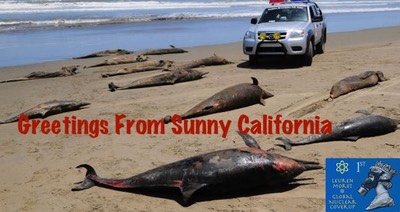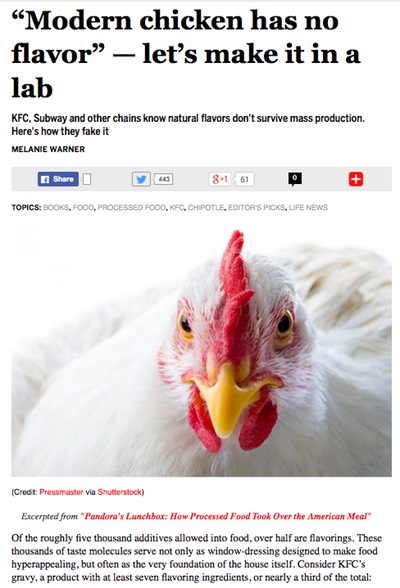⚛ ⚛ ⚛ ⚛ ⚛ ⚛ ⚛ ⚛ ⚛ ⚛ ⚛ ⚛ ⚛ ⚛ ⚛ ⚛ ⚛ ⚛ ⚛
⚛ ⚛ ⚛ ⚛
Summary
The discovery of nuclear fission has destroyed human health and lives on a large scale that dwarfs all the lives lost in a century of world wars and episodes of genocide. But it had its greatest impact on indigenous people in under-developed areas of the world, and poor minority groups in the large cities of the U.S., particularly African Americans. First came the development and testing of nuclear weapons regarded as essential for national security by the major governments of the world, carried out in low population density areas where there were mainly indigenous or minority populations live. This was followed by the construction of large numbers of nuclear power stations in the U.S. near the large cities, promoted by the federal government anxious to end the public’s fear of fallout from bomb testing and as a clean way to meet the rapidly growing need for energy to replace the massively polluting fossil fuel power stations. After it was discovered in the early 1970s that even small radiation doses from permitted normal releases of fission products less than those received from normal background radiation produced unexpectedly large adverse effects on human health, government agencies tried to minimize the health effects on the majority population. This was done using the Federal Milk Marketing Program, originally established in the 1930s to protect the income of farmers when their milk did not taste well by forcing wholesalers to pay the normal price and to direct it to be diluted with normally tasting milk. Beginning in the 1970s, this program was used to send milk produced in areas close to nuclear reactors contaminated with fission products into the inner city areas where the population was composed mainly of low income African Americans and recent Hispanic immigrants.
Introduction
Although the testing of nuclear weapons was carried out in remote areas predominantly inhabited by minority or indigenous populations far from the major population centers, the radioactive fallout of uranium and fission products travelled thousands of miles. It entered the food, the milk and the drinking water and led to a silent epidemic of infectious and chronic diseases, slowing the normal decline of both infant and total mortality rates for the whole population as well as damaging the developing brain. But this was not understood at the time because the effect of the relatively small radiation doses produced by gamma radiation due to fallout from distant bombs on the ground was less than the dose produced by natural background radiation in a year, or the dose from a chest X-ray.
However, the adverse effects of fission products on human health were hundreds to thousands of times greater than expected when bomb testing began because the newly created radioactive chemicals were inhaled or ingested, and concentrated in key organs such as the thyroid or the bone marrow where the cells of the immune system originate. Moreover, it was not discovered until the early 1970s that prolonged exposures to low doses of radiation are more biologically damaging than the same dose received in a single short exposure such as an X-ray or gamma rays from the brief flash of a distant nuclear explosion.
It is the purpose of the present paper to summarize the evidence that the failure of mortality rates to continue their previous rate of decline that began in the 1950s and had its greatest effect on the Black population in the U.S., was due to fission products from bomb testing and releases from nuclear reactors. Thus, major accidents at the Savannah River nuclear weapons plant in South Carolina, that took place in November and December of 1970, were kept secret by the U.S. government because it was felt absolutely essential for the continuing development and testing of nuclear weapons required for national security. As discovered by independent scientists in the late 1980s 1, this policy led U.S. federal and state government agencies not only to falsify public health data but also to deliberately send the most contaminated milk near nuclear reactors into the areas of the inner cities with the largest Black population.
This explains why the greatest rates of infant mortality, cancer and other chronic diseases such as diabetes exist in the minority Black and Hispanic immigrant populations.
Only education of the public about the enormous damage to human health and the attending health-care costs that target the most vulnerable poor minority in the U.S. can end the cover-up by a government trying to protect the deterrent value of nuclear weapons and the large corporate investments in uranium mines and reactors.
The Effect of Nuclear Weapons
Initially, it was the secret production of nuclear weapons driven by the fear that Hitler’s Germany would develop and use them first that produced the first wave of contamination of the environment, causing a hidden epidemic of chronic diseases and deaths among the workers in the mining and production of the fissionable forms of uranium and plutonium. This was followed by the first secret test of a nuclear weapon in New Mexico in July of 1945, a state with a large Native American and Hispanic population. Within a month the first military use in Hiroshima and Nagasaki took place, whose detailed consequences were again kept secret from the American public as described by Robert Jay Lifton and Greg Mitchell in their book “Hiroshima in America: Fifty Years of Denial” (2). This included in particular the long range consequences of the radiation doses received by the survivors, both from the short burst of gamma radiation produced by the explosion and the long term chronic internal exposure of the survivors and the whole Japanese population due to fallout.
During the following years of the Cold War, hundreds of nuclear weapons were tested again in areas mainly inhabited by indigenous populations. Thus, the first test series by the U.S. took place in the Marshall Islands in the Pacific where a total of 45 tests took place by 1958 (3). In 1954 an unexpected wind shift exposed the people on Rongelap Island (part of the Marshall Islands) to massive fallout and the effects on their health was secretly studied by government funded scientists but not made public until 10 years later (4, 5).[1] The acute early effects of the high doses involved primarily the skin, the hair and the gastrointestinal system, with the greatest effects found in the youngest children. In addition, there was a depression of blood cells, again greatest in the youngest children. Late effects were mainly thyroid abnormalities such as nodules and hypothyroidism as well as the resultant retardation of growth in most of the children produced by the large doses to the thyroid resulting from the inhalation and ingestion of radioactive Iodine–131.
A major series of bomb tests in the continental United States took place in Nevada beginning in January 1951, again in a low population density area where Native Americans and Hispanics made up a large fraction of the total population. As described by Jay M. Gould (6), after two of the first four fallout clouds were found to have drifted towards Las Vegas with its predominantly white population, all further tests took place when the winds were blowing in the direction of the reservations where most Native Americans lived.
As Figure 1 (Nevada low-birth-weight percentage among white and non-white 1950–1990) reproduced from reference 6 shows, studies carried out four decades later by the independent Radiation and Public Health Project revealed an extraordinary increase in the 1951 Nevada low-birth-weight percentage for white live births from 10 to 18%, which was far greater than the corresponding increase for non-whites of less than 1%. Moreover, while the percentage of low-weight births for whites and non-whites was the same in 1950, the percentage widened enormously all through the 1950s and 1960s until a peak of 17% occurred in 1972 for the non-white newborns when the whites’ rate had declined to just 7%.
This large peak for the non-white newborns took place after the worst venting from an underground explosion in Nevada in December of 1970 called “Baneberry”, producing a high contamination of the milk with many radioactive elements such as strontium–90 that peaked in the body of mothers living in the many Indian reservation in Nevada in 1972. This leads to a slowing of the rate of growth of the foetus, as well as an increase in the risk of premature birth and below normal weight of the newborn, which in turn raises the risk of infant mortality as well as the chance of developmental impairment.
In fact, a spike in infant mortality had occurred in New Mexico after the first bomb test in 1945, which must have been noted by government officials at the time, but secrecy connected with the bomb project prevented public knowledge of the link to nuclear fallout for a quarter century to come. By the time atmospheric tests had ended in 1962, 100 atmospheric tests had taken place in Nevada (2), covering most of the country with fallout clouds.[2] But no epidemiological studies that would have detected such well-known effects as leukaemia and cancer in children were carried out by government agencies. Thus, the full extent of the damage to human health and the racial and ethnic discrimination involved did not become known until long after it was discovered by non-government funded independent scientists that very low-level chronic internal exposures to radioactive particles in the milk, the drinking water and the food led not only to leukaemia, other cancers and other conditions such as infections, heart disease and strokes, but also to much larger numbers of foetal deaths, low birth weight, congenital malformations and infant mortality (6,7,8).
Thyroid damage to the foetus also increases the risk of hypothyroidism at birth, leading to impairment of brain development. This turned out to explain the decline in Scholastic Aptitude Tests taken typically at age 18 that began in the U.S. beginning some 18 years after the first nuclear test in 1945. It was found that annual declines correlated closely with the magnitude of each test series in Nevada and the amount of Iodine–131 in the milk 18 years earlier (9,10). Moreover, as predicted, the SAT score decline ended 18 years and began to rise with the end of all atmospheric testing by the U.S., the U.K. and the U.S.S.R. in 1963 (1).
Atmospheric nuclear tests were carried out by the Soviet Union in the Kazakh Republic beginning in 1949, from where the winds brought the fallout into the Himalaya Mountains, India, Burma and Afghanistan, again affecting the health of indigenous populations rather than the majority of Russians. This was followed by the first French atmospheric tests in the Sahara desert in 1960 from where the nuclear fallout came down in the high rainfall areas of Equatorial Africa, affecting most seriously the native African population, and probably triggering the AIDS epidemic as described in Chapter 10 of “Deadly Deceit” (1). Subsequently, French nuclear tests were moved to Mururoa Island of the South Pacific continuing until 1975, where the winds took the clouds of fission products to South America and South Africa where once again the indigenous population bore the brunt of the effects.
The last atmospheric tests were carried out by China at Lop Nor just north of Tibet, beginning in 1964, not ending until 1980, with tests taking place when the winds were blowing south towards the Himalayan Mountains rather than to the east where the large cities were located. Again this resulted in the greatest radiation exposures for the indigenous population of Tibet and India. Underground nuclear tests by China that frequently vented as in the U.S. continued until 1993, a year after they were discontinued by the U.S.
The Effect of Nuclear Reactor Operations
Largely in an effort to make the testing of nuclear weapons acceptable to the American public in the face of rising concern, in December of 1953 President Eisenhower announced the program of “Atoms for Peace.” It led to the construction of the first commercial nuclear reactor in Shippingport, Pennsylvania, near Pittsburgh, completed in 1957. Unbeknown to both the scientific community and the general public, this turned out to be the beginning of yet another source of radioactive releases into the environment as some one hundred nuclear power stations were built in the U.S. in the hope that “clean nuclear energy too cheap to meter” would eliminate the health problems associated with mining and burning of coal.
Because of the atmosphere of secrecy surrounding the development and testing of nuclear weapons in the 1950s when it was feared that the large communist armies of the Soviet Union and China would overrun Europe and Korea, no epidemiological studies of populations living downwind from the test-sites in New Mexico and Nevada exposed to small radiation doses were carried out by public health officials. It was widely believed that the small doses associated with distant fallout would produce no detectable harm because it appeared likely that there was a safe threshold before any adverse effects could be observed, as appeared to be the case for immediate death from exposure to high levels of radiation.
Likewise, the nuclear engineers and physicists who had worked on the development of nuclear weapons were anxious to see the discovery of fission produce great benefits to society and not just threaten it with extinction in a nuclear war. Thus they wanted to believe that small amounts of radioactive material permitted to be released by nuclear power plants during normal operation would produce no detectable adverse effects on human health.
But just about the time the first commercial nuclear power stations were being built in the late 1950s and early 1960s, a series of articles in scientific journals showed that effects of very low doses of man-made radiation comparable to those from natural background did have an unexpectedly large ability to increase cancer in some humans, namely in the developing foetus in the womb. This discovery was made by Dr. Alice Stewart at Oxford University and her co-workers in England first published in 1958 (11) when it was found that only a few abdominal X-rays just before birth doubled the risk of leukaemia and other forms of cancer in their children before the age of ten.
This finding was independently confirmed by a study in the U.S. by Brian MacMahon at Harvard University in 1962 (12), greatly increasing the concern about nuclear weapons testing just at the time when a brief moratorium that had halted atmospheric testing in 1959 was broken by the Soviet Union with the detonation of a very large hydrogen bomb close to the Arctic Circle. It had an explosive power of about 50 million tons of TNT, equivalent to a few thousand Hiroshima bombs. Since it has been estimated that a 1 million ton bomb exploded in the polar latitudes results in a dose of 2 – 4 millirads, this one bomb resulted in an estimated dose of some 100 – 200 millirads to developing infants in the northern hemisphere, comparable with the dose from an abdominal X-ray of some 200 – 400 millirads (13). Because the dose required to double the normal incidence of childhood leukaemia and cancer was calculated to require a dose of about 1,700 millirads or 1.7 rads when X-ray pictures were taken just before birth, it was possible to predict that this single bomb test was likely to lead to an increase in childhood cancer around the world of the order of 5-10%.
Since the whole series of the last bomb tests by the U.S., the U.K. and the U.S.S.R. in 1962-63 were estimated to have had a power of about 100 Megatons of TNT, an increase in childhood cancers of the order of as much as 10- 20% could be expected by 1955, and this was in fact found to have taken place in Connecticut, the only state in the U.S. for which the incidence of cancer has been available since 1935 (6).
Most importantly, the studies of Stewart and MacMahon on the effect of radiation exposure during early development showed that there was no safe threshold down to at least the dose from a single abdominal X-ray, which is of the same order of magnitude as the dose from natural background radiation that typically ranges from 100 to 400 millirads per year in the U.S. This was less than the maximum of 500 millirads per year to any individual of the general public near the reactor that was allowed to be produced by government regulations at the time when the first commercial nuclear power stations were being built.
In the light of these findings during the early 1960s, in 1969, the same year that the conference on Radiation Biology of the Foetal and Juvenile Mammal took place that revealed the great sensitivity to low radiation exposure of X-rays and fission products during early development, a major warning of the great danger of proceeding with a large program of nuclear power was published by Richard Curtis and Elizabeth Hogan (14). This book was triggered by the fact that in 1966, the Fermi reactor, only 30 miles from Detroit Michigan, had a major accident that released significant amounts of fission products into the atmosphere that for a while caused the fear that Detroit might have to be evacuated.
By the early 1970s, the warning that releases from nuclear reactors would produce serious adverse effects on human health was confirmed by the finding that infant mortality rates were significantly increased in areas near and downwind from the Dresden nuclear reactor in Illinois upwind from nearby Chicago, and the Shippingport reactor in western Pennsylvania near Pittsburgh (7).
Even greater adverse effects were found downwind and downstream from the nuclear fuel reprocessing plants located in West Valley New York, some 25 miles south of Buffalo that had gone into operation in 1966 (7). Infant mortality had gone up 54% in Cattaraugus County between 1966 and 1967, and every adjacent county had shown dramatic increases. During the same years, every county in Western New York more than 50 miles away the infant mortality rate had declined.
But the degree to which the federal government in Washington, D.C. was willing to cover-up the serious health effects of low-level exposures to fission products in order to deny the enormous health damage that had been produced by decades of bomb testing and the operation of both military and civilian reactors only became known some two decades later when Jay M. Gould and Benjamin Goldman published “Deadly Deceit; Low Level Radiation High Level Cover-Up” (1).
By the early 1970s it had been discovered that the single largest way in which fission products reached the population and produced large internal doses was by the drinking of milk. And so, as described in chapter 8 of the book by Gould and Goldman, it was decided by the federal government to lower the effect of the unavoidable releases of fission products from nuclear reactors on the White majority population in the large cities to divert the milk produced in areas near nuclear plants into the inner cities where most of the Black minority lived.
Federal Program for Milk Shipment
It so happened that there existed a federal program for controlling the shipment of most of the milk in the nation from farms to the consumers in the cities that had been developed in the 1930s in order to protect the income of farmers when the milk from their farms occasionally did not taste well. The program forced wholesalers who bought the milk to pay the normal price, even when on some occasions there was a problem with the quality of the milk, which could be diluted with the milk from other areas that did not have such a problem. Dilution of the poorly tasting milk with milk from other farms was therefore believed to be a way to solve the problem.
Thus, it was possible to direct milk shipments from farms close to nuclear plants into the inner city areas where few White people lived, in the hope that dilution at the dairies and processing facilities would make any adverse effects on human health statistically undetectable. Unfortunately, this was based on the assumption that there is a direct or linear relation between the amount of radioactivity in the milk and the effect on human health, and that in fact there might be a safe threshold level where no adverse effects exist. But just about the same time that unexpectedly large increases in cancer and infant mortality were found near nuclear plants in the early 1970s, another unexpected discovery was made by Abraham Petkau, a scientist working for the Canadian Atomic Energy Establishment.
What he discovered and published in 1972 was that the radiation dose required to rupture animal cell membranes immersed in water was very large, namely 3,500 rads, the equivalent of some 35,000 years of normal background radiation (15). But when instead he added a small amount of radioactive sodium salt to the water, such as occurs from fallout or reactor releases to a river, the membrane ruptured at the absorbed dose of only 0.75 rads, a dose 5,000 times less than was necessary to break it in a short burst of radiation, such as had occurred at Hiroshima or Nagasaki. In a series of experiments he found that the more protracted a given radiation dose is, the less it took to break the membrane, contrary to the case of a direct action on the genes, where a protracted dose can lead to less damage because repair processes can take place.
What he discovered by a further series of experiments was that a different biological process than the normal direct action of a particle damaging the DNA in the nucleus of the cell that leads to a mutation that can cause cancer or a birth defect. Instead, the membrane damage was done by an indirect action involving the production of a highly unstable form of oxygen in the water or cell fluid. It is a molecule of oxygen that has picked up one of the electrons ejected from the molecules in the fluid by the radiation, a so-called “free radical”. This electrically charged molecule is attracted to the cell membrane and initiates a chain reaction that weakens it so that it breaks.
What he realized was that when there are many free radicals formed all at once such as in the case of a short, intense burst of radiation, they collide and become harmless ordinary oxygen molecules again. But when the same dose is spread out over hours, days or weeks as is the case when radioactive fission products are the source of radiation, each free radical has a chance to reach the cell membrane and cause it to break. Thus, the entire foundation of all existing knowledge as to the likely damage produced by very low, protracted exposures, as compared to short exposures from a nuclear detonation or a brief low-level diagnostic X-ray, had been shaken. Suddenly, low-level but long lasting exposures from nuclear fission products were more harmful to cell survival than the same dose in a short burst. Thus, the dose-response curve would be expected to be logarithmic or supra-linear, rising rapidly at low doses and flattening out at high doses.
Gross Underestimation of Radiation Risk
This meant that risk estimates for low-level environmental exposures based on a linear extrapolation from the experience of the Hiroshima survivors or individuals who had received medical X-rays greatly underestimated the risk by factors of hundreds to thousands of times. And diluting contaminated milk no longer is nearly as effective as believed on the basis of a linear form of the dose-response relationship. Thus, even a ten-fold dilution does not reduce the risk by a factor of ten but instead by only one-half.
Although infant mortality rates in all the large cities were affected, the case of Washington, D.C. where the Black population represents some 70% of the total number, and is concentrated in a certain area of the city showed the effect most clearly. This was detected in connection with a study of the effect of the Chernobyl nuclear reactor accident in April 1986 described in Chapter 2 of reference 1. It was found that the fallout from the accident had caused large rises in the amount of short-lived radioactive Iodine–131 in milk with a half-life of 8 days in certain parts of the U.S. This in turn was found to have been followed by a significant 5.3% increase in the total number of deaths in May 1986 compared with the same month the previous year for the U.S. as a whole.
Moreover, the increase in the total number of deaths at all ages in different census regions of the country in the period May to August, relative to the number in the previous year, was related to the amount of Iodine–131 in pasteurized milk as measured by the EPA. And the best fit to the data was indeed for a logarithmic or supra-linear form of the dose-response rather than a straight line such as is shown in Figure 2 (Dose-response curve: Increase in total deaths as a function of exposure to Iodine–131 in milk), extended to the very much higher levels of Iodine–131 that were measured in some parts of Europe. In particular, it was found that infant mortality increased 28% the following month of June in the South Atlantic region relative to June 1985, while it rose 12.3% for the U.S. as a whole.
When the authors examined the reported levels of Iodine–131 in the milk in May and August 1986 for seven cities along the east-coast from Baltimore, Maryland down to Norfolk, Virginia, the highest levels of Iodine–131 were found in Washington in the District of Columbia both for May and August, followed by Baltimore, as can be seen in Figure 3 (Iodine–131 in milk of mid-Atlantic states after Chernobyl: Maximum readings during May and August 1986).
But as the authors point out, it is unlikely that the high concentrations of Iodine–131 in Washington and Baltimore, more than twice as high as for the other cities, could be explained solely by the fallout from Chernobyl.
First of all, the highest levels of Iodine–131 measured in the rain in May of 1986 was reported for Virginia, whereas the levels measured in the milk in Virginia were less than half of those in Washington and Baltimore.
Secondly, the level of Iodine–131, which is only produced by nuclear fission, continued to be highest in August 1986, three months after the fallout from Chernobyl arrived, so that with its short half-life of about one week it should have been completely undetectable 12 weeks later. But most importantly is the fact that since there are no dairy cows in the small District of Columbia in which Washington is located as well as no nuclear reactors.
There is no way that the high concentration of iodine-131 in the Washington milk could be explained by anything else than extraordinarily high levels in the milk shipped into the city, due to emissions from the nuclear reactors in the surrounding states with high levels persisting through August.
Nuclear Plant Upwind of the Largest Milk-producing County
In further support of their conclusion, the authors discovered that a nuclear plant on the border of Maryland and Pennsylvania 30 miles north of Baltimore and 60 miles north of Washington, upwind from the largest milk-producing county in the U.S. that supplied a large part of the milk for these cities, had long been plagued by serious problems that led to major releases of fission products.
This plant, called Peach Bottom, had begun to operate its first gas-cooled reactor in 1966, but leaked so badly that it had to be decommissioned a few years later. Units Two and Three of the Boiling Water Reactor type started in the early seventies, and they too leaked large amounts of fission products in the next few years, which led to a series of warnings by the Nuclear Regulatory Commission that release limits had been violated and required extensive modifications of their waste treatment and filtration systems. However, after a major release in 1976, the NRC simply provided a three-fold increase in the amount of radiation Peach Bottom was allowed to release.
Peach Bottom reactors continued to have serious problems during the 1980s. The plant was repeatedly fined by the NRC for violations and was shut down in 1985 because of malfunctions. As the authors describe, in 1986 control rods were inappropriately withdrawn from a reactor core, the emergency power sub-station had an explosion and fire and the NRC condemned the operators for “inattentiveness and sloppiness.” In fact, the NRC called it “one of the worst plants in the nation”, eventually shutting it down in March 1987. It remained closed for some time pending major management changes, operator retraining, mechanical modifications and repairs mandated by the NRC.
Sharp Rise in Non-White Infant Mortality in Washington
As would be expected, if Peach Bottom, releasing large amounts of fission products under the cover of Chernobyl, was indeed the principal factor in the sharp rise in infant mortality in Washington and Baltimore in the period 1986-87 then it is not surprising that two months after it was shut down, infant mortality in D.C. returned to about the same rate as for the U.S. as a whole for the first time since it began to operate in 1966.
All this explains why the non-white infant mortality for Washington relative to that for the U.S. as a whole, which was below the rate for surrounding Maryland and Virginia between 1950 and 1965, had started to sharply exceed that for Maryland and Virginia as well as the rate for the U.S. after 1972. Shipment of milk from the area around Peach Bottom clearly explains why infant mortality in Washington with its dominant Black population reached the highest level recorded since World War II, This was fully two-and- a-half times higher than in the rest of the nation, exactly nine months after the Chernobyl fallout arrived in the U.S. when the children born that month had been in their most vulnerable foetal stage of development in their mother’s womb.
The Targeting of the Black Population
The degree of racial segregation that still exists in the large metropolitan areas of the U.S., that makes racial targeting by means of the milk supply possible, is illustrated by the recent data for cancer incidence that has become available for the nation (16). Thus, for the year 2002, for Black males and females combined, Washington D.C. had a cancer incidence rate of 512.8+/- 23.0 per 100,000, much higher than the rate for all Blacks in the U.S., which is 471.0+/- 2.8. In sharp contrast, the Whites’ cancer rate in D.C. was only 404.5+/-29.5, significantly lower than the rate for the Black population.
How well the dominant White population was protected by the high degree of segregation of residence and food stores is illustrated by the fact that the White population’s cancer incidence rate in the D.C. of 404.5+/-29.5 was significantly lower than for the average White population in the U.S. of 460.8+/- 2.8 per 100,000. And the Whites’ cancer incidence in D.C. was even the lowest among all the cities in the U.S. listed.
The degree of targeting of the Black population still living in highly segregated parts of the large metropolitan areas is further illustrated by the fact that the cancer incidence for the recent immigrant Hispanic minority is greatly lower than for Blacks. Thus, in Washington D.C., the incidence of cancer in 2002 for Hispanics was only 314.3+/-73.6, compared with 512.8+/-23.0. Hence the Blacks’ rate is higher by 198.5 than the rate for Hispanics, which is by 63%. Moreover, the Blacks’ rate in D.C. was the highest of any city listed other than the city of Detroit, Michigan, whose very large cancer rates will be discussed shortly.
Since cancer has long been known to be produced by radiation, there can be no doubt that the principal cause of these abnormally high rates of infant mortality, low birth weight, behavioural and cognitive problems as well as infectious and chronic diseases such as leukaemia, cancer and diabetes cannot be attributed to racial differences in the genes.
Instead, the evidence of recent rises and declines of infant and total mortality rates clearly represent environmental factors in which nuclear fission products are a synergistic factor that multiplies the action of other chemicals and air pollutants in the environment, as Rachel Carson has warned the world long ago in her ground-breaking book “Silent Spring” (18).
Deliberate Inflicting of Disease and Death on a Minority
Although what happened in Washington represents the problem of deliberate disease and death inflicted on a minority population by the dominant racial majority resulting from the development of nuclear technology in its most graphic form, not only the minority population but the entire nation as well as the entire world has suffered the consequences.
Thus, Detroit, Michigan had an even higher cancer rate than Washington D.C. in recent years, not only for Blacks but also for Whites. Thus, the Black cancer incidence in 2002 was 563.7+/-16.3, nearly 10% higher than in D.C. and nearly 20% higher than for the U.S. as a whole. In fact, Detroit had the highest Black cancer incidence in the nation.
But in sharp contrast to D.C., it was also very high for the White population in Detroit, namely 525.6+/- 8.1, compared with 460.8+/- for the U.S. as a whole, 14% higher than for the nationwide average cancer incidence. This time, the source of fission products was not just the milk shipped into the city, but also the drinking water, contaminated by the large number of nuclear reactors that discharge their liquid wastes into the Great Lakes, which are the source of drinking water for the cities on their coast. And in this case, both the White and Black populations were strongly affected, explaining the difference between the case of Washington and Detroit since Washington receives its drinking water from the Potomac River, on which there is no nuclear reactor located.
The Continuous Cover-up, the Tragic Damage
The enormously high cancer rates for both Whites and Blacks in the Detroit area and all of Michigan, both higher than in the entire Midwest, illustrate the enormously great financial crisis that has been produced by the spiralling health care costs connected with the treatment of cancer, disabilities and other chronic conditions like diabetes that are threatening the economic future of the nation.
This is particularly clearly illustrated by the enormous recent financial losses suffered by General Motors and Ford producing automobiles in or near Detroit. It is the large financial cost of health care for the workers and retired employees in the absence of a national single payer health insurance program that has been a crucial factor in the cost of their products. This has been identified as one of the most important causes of the financial problems of these companies in competing with those in Japan and Korea that do not have their factories in Detroit or Michigan (18).
But the economic impact of the enormous health care costs produced by the rise in the incidence of diseases has been felt all over the U.S. It has led to a sharp drop in savings and a rise in family debt and bankruptcies. And a similar decline in personal savings has occurred in Japan, where some 56 nuclear reactors have been contaminating the drinking water and the rice paddies in the mountains since the mid-1970s when the nuclear power stations began to be built, in an area less than the size of California that has just 5 reactors operating today. Moreover, in Japan, cancer deaths have recently become the dominant cause of death that is so large that there has been a rise rather a normal decline in the total mortality rate since the early 1980s, as well as a renewed rise in the percentage of babies born below normal weight (19), exactly like in the U.S.
Impact of the Nuclear Age Deadlier Then Wars and Genocides
The rise in illness and deaths produced by the development and testing of nuclear weapons followed by the construction of nuclear power stations has had an impact on human health and deaths so large that by now it greatly exceeds that of all the wars and episodes of genocide in the last hundred years.
As shown in “The Enemy Within” (6), the excess total deaths in the United States above the expected normal decline in the mortality rate for all age groups since the first nuclear weapon had exploded, reached 16 million by 1993. More recent data show that it has reached close to 23 million premature deaths by 1995. In 2003, the European Committee on Radiation Risk estimated that the total number of cancer deaths resulting from the nuclear project around the world since 1945 was 61.6 million, as well as 1.6 million infant deaths and 1.9 million foetal deaths, in addition to the deaths from other diseases (19).
Thus, the total deaths and loss of quality of life due to all diseases and disabilities related to uranium fission by now has reached hundreds of millions, and the economic costs resulting from premature deaths, disabilities and disease have been rising all over the world. Indeed, a recent study published in 1999 that examined the cumulative impact of the use of fission of uranium and plutonium has concluded that the total number of individuals, who died prematurely or suffered serious disease or disabilities since nuclear fission was discovered in 1939, might by now involve as many as one billion people around the world (20).
Yet the governments of the nations that developed and tested nuclear weapons, and promoted the construction of nuclear power reactors to hide the effects of nuclear fission, continue to cover-up the tragic damage they have produced. Nor have they found a solution to the problem of safeguarding the highly radioactive spent nuclear fuel from terrorist attacks, or its permanent safe storage for thousands of years, threatening the health of generations to come.
Outlook
However there is hope for the future, since there has been a worldwide movement to develop alternative forms of energy to replace both fossil fuels and nuclear power that do not pollute the environment and increase the danger of climate warming. As for the warming of our planet, there is also another serious problem of nuclear energy kept from the public by governments, since large quantities of fossil fuels are required to mine, transport and enrich the uranium fuel, discharging large quantities of greenhouse gas carbon dioxide into the atmosphere.
Moreover, in the process of enriching the uranium, highly toxic depleted uranium waste is produced, which has been used by the military of the U.S. and other nations to make bombs and ammunitions that have led to the generation of highly toxic, long-lived radioactive poison gasses, adding to the toxic fission products released by some 400 nuclear plants operating around the world.
Finally, it must be said that as the result of the tragic effects produced by the discovery of fission, governments have had to learn that large-scale wars between nations such as took place in the 20th century cannot continue in the nuclear age since the use of the nuclear weapons arsenals would clearly end all human life on Earth.
References:
(1) Jay M. Gould and Benjamin Goldman, Deadly Deceit: Low Level Radiation-High Level Cover-Up. Four Walls Eight Windows, New York (1990).
(2) Robert J. Lifton and Greg Mitchell, Hiroshima in America: Fifty Years of Denial, G. P. Putnam and Sons, New York (1995).
(3) Samuel Glasstone, The Effects of Nuclear Weapons, Appendix B, U.S. Atomic Energy Commission (April 1962).
(4) Robert A. Conard and Arobati Hicking, Medical Findings in Marshallese People Exposed to Fallout Radiation. J. American Medical Association 192, 457-459 (May 1965).
(5) Wataru W. Sutow and Robert A. Conard, Editors, The Effects of Fallout Radiation on Marshallese Children. In Radiation Biology of the Fetal and Juvenile Mammal, Proceedings of the 9th Annual Hanford Biology Symposium, May 5-8,1969, Edited by Melvin R. Sucow and D. Dennis Mahlum, Vol. 17, AEC Symposium Series, 661-672 (September 1969).
(6) Jay M. Gould, Ernest J. Sternglass, Joseph J. Mangano and William McDonnell, The Enemy Within: The High Costs of Living Near Nuclear Reactors, Four Walls Eight Windows, New York (1996).
(7) Ernest J. Sternglass, Low Level Radiation, Ballantine Books, New York (1972)
(8) Ernest J. Sternglass, Secret Fallout: Low Level Radiation from Hiroshima to Three Mile Island, McGraw- Hill , New York (1981).
(9) Ernest J. Sternglass and Steven Bell, Fallout and SAT Scores; Evidence for Cognitive Damage During Early Infancy, Phi Beta Kappan 64, 541-545 (1983).
(10) Ernest J. Sternglass and Steven Bell, The 1983 SAT Scores and their Link to Nuclear Fallout, Phi Beta Kappan 65, 372-373 (1984).
(11) A. Stewart, J. Webb and D. Hewit, A Survey of Childhood Malignancies. British Medical Journal 1, 1495 (1958).
(12) Brian MacMahon, Prenatal X-Ray Exposures and Childhood Cancers, Journal of National Cancer Institute, 28. 1173-1191 (1962).
(13) Ernest J. Sternglass, Cancer: Relation of Prenatal Radiation to Development of the Disease in Childhood, Science 140, 1102-1104 (1963).
(14) Abraham Petkau, Effect of Sodium–22 on a Phsophor-Liipid Membrane, Health Physics 22, 239 (1972).
(15) Chris Busby, Rosalie Bertell, Inge Schmitz Feuerhake, Molly Scott Cato and Alexei Yablokov (Editors), The Health Effects of Ionising Radiation Exposure at Low Doses for Radiation Protection Purposes, European Committee on Radiation Risk, Green Audit Press, Aberystwyth, SY23 IDZ United Kingdom (2003).
(16) U. S Department of Health and Human Services, Center for Disease Control, 2002 Cancers Grouped by Geographic Area, Male and Female, Age Adjusted Incidence Rates and 95% Confidence Intervals, available at www.cdc.gov/cancer/npcr/uscs/.
(17) Rachel Carson, Silent Spring, Fawcett World Library, New York (1962).
(18) Micheline Maynard, Autoworkers Must Sacrifice, Leader Warns, New York Times, June 12, 2006.
(19) Vital Statistics of Japan 2003, Statistics and Information Department, Minister’s Secretariat, Ministry of Health, Labour and Welfare, Volume 1.
(20) Rosalie Bertell, Victims of the Nuclear Age, The Ecologist, 29, No. 7, 408-441 (1999).
Glossary
DNA: A large molecular structure in the center of the cell that contains the information for the function of the cell as well as for the transference of the genetic characteristics.
EPA: The U.S. Environmental Protection Agency that sets standards for permissible amounts of toxic chemicals that can be discharged into the air and drinking water.
FISSION PRODUCT: A chemical that results from the splitting in two of the nucleus of a heavy element such as Uranium or Plutonium and is generally radioactive, that is, it emits powerful particles like electrons or gamma rays from its nucleus.
FREE RADICAL: A molecule such as a normally electrically neutral oxygen molecule to which an extra electron is attached, making it capable of doing damage to or killing living cells.
GAMMA RAY: A powerful form of radiation or light, like an X-ray that is emitted from the nucleus of certain atoms such as those formed in the normal radioactive decay of Uranium like Radon and in many of its fission products, such as Iodine–131.
HYPOTHYROIDISM: A condition in which the thyroid gland is under-active, reducing the normal production of thyroid hormones. When present at birth, it leads to cognitive problems as well as retarded growth. In adults, it leads to slowness of thinking and obesity.
IODINE–131: A fission product that is an intense source of radiation, sending out all its powerful gamma rays and electrons that break up molecules in just a few weeks after it is created in the fission of a Uranium nucleus. Since it concentrates in the thyroid, it produces hypothyroidism, growth retardation, cognitive impairment and thyroid cancer. When its radiation damages the thyroid of a pregnant female, especially in the first trimester, it leads to premature birth, which is associated with a higher risk of infant mortality and developmental problems for the child.
INCIDENCE RATE: The number of newly diagnosed cases of a disease each year per unit population, such as the number of cancer cases reported per hundred thousand people to government agencies in recent years, in contrast to the mortality rate that has been available for many decades.
INFANT MORTALITY RATE: The number of babies under one year of age that die each year per thousand babies born.
LOW BIRTH WEIGHT: Babies that are born with a weight of less than 5.5 pounds or 2.5 kilograms, mostly associated with premature birth, often leading to infant mortality, developmental problems and illness in later in life.
NRC: The Nuclear Regulatory Commission has the responsibility for the safe operation of all commercial nuclear reactors in the nation, establishing licensing procedures and setting limits on permissible discharges of radioactive fission products into the air and water.
NUCLEAR REACTOR: A nuclear reactor is the heart of a nuclear power station, a thick-walled steel vessel containing rods filled with uranium pellets surrounded by water or gas that heats the water or gas to a high temperature, performing the same function as a coal or gas burner in an ordinary fossil fuel plant. In the case of water cooled nuclear power plant of the Boiling Water Reactor or BWR type, the water is turned into steam that is piped to the turbines in a separate building which generates electricity. In a Pressurized Water Reactor (PWR), the hot water is taken to a heat exchanger and generates steam in another closed loop which powers the turbines.
RAD: A rad is a unit of energy absorbed per gram of matter or tissue, in the X-rays, gamma rays or particles emitted from a radioactive element such as Uranium–235, Iodine–131 or Strontium–90. A millirad is 1/1000 of a rad, and normal background radiation from radioactive elements in the ground, in the air or from cosmic rays produces an annual dose of the order of 100 to 400 millirads in the human body.
REPROCESSING PLANT: A facility that takes the spent Uranium nuclear fuel from a nuclear reactor and chemically extracts Plutonium from it, which was formed by the absorption of slowed down neutrons emitted by the Uranium in the course of fission. Because the spent fuel contains many fission products, is very radioactive and thus emits powerful gamma rays and other particles for a long time, it is a very dangerous facility, releasing very toxic elements into the environment. The Plutonium can be used either to make a type of nuclear bomb, or another form of fuel for a nuclear plant.
SAT: This is the Scholastic Aptitude Test commonly taken by high school students who want to enter a college, typically at age 18. It tests for both, mathematical knowledge as well as reading and writing ability.
PLUTONIUM: This is a heavy, radioactive element not found in nature in significant amounts. It is created in nuclear reactors fueled with Uranium as a result of the absorption of neutrons emitted by a particular isotope or type of Uranium, namely Uranium–235 in the course of the operation of the reactor by the dominant form, Uranium–238. The different isotopes of Plutonium have different uses, one makes a type of bomb, the other a long-lasting heat source used to power scientific instruments in satellites, or a fuel for a type of reactor.
URANIUM: Uranium is a heavy radioactive element found in nature, some isotopes of which have the property that they break up or fission when they absorb a slowly moving neutron, giving off a very large amount of energy or heat in the process, namely the one that has a mass of 235 protons and neutrons in its nucleus. One pound of this isotope can produce the same energy as 1500 tons of coal, but it occurs as less than one percent of all the Uranium, which consists mainly of the form that has a mass of 238 units which does not fission when it absorbs a slow neutron in a reactor. Thus, a difficult and costly process is required to separate out the Uranium–235 used in a reactor or as an explosive in a bomb, a so-called enrichment process. This results in Uranium with a little less of Uranium–235, so-called depleted Uranium. Because of the long life of both of these isotopes and their radioactivity lasting millions of years, they represent a very toxic threat to human health in the form of fine particles created when Uranium ammunition impacts armour or a hard surface and burns, forming a poisonous gas of Uranium oxide that can travel long distances in the air, carried by prevailing winds around the world.
[1] Addition by the editor (E.J.Sternglass): Rongelap Atoll is some 170 miles west of the Bikini Atoll. The entire land area of the Republic of the Marshall Islands (RMI) is 181.3 sq km which is about the size of Washington DC. Its population is 50,000 living on 29 coral atolls and 5 small low-lying islands in the central Pacific, mid-way between Hawaii and Australia. Many of the atolls and islands are going to disappear due to environmental reason (greenhouse effect). “The United States conducted the U.S. Nuclear Testing Program (NTP) in the Marshall Islands between 1946 and 1958. In those twelve years, the U.S. detonated 67 nuclear bombs in and around the land, air, and water of the Marshall Islands. The bombs had a total yield of 108,496 kilotons, over 7,200 times more powerful than the atomic weapons used during World War II. In 1952, the U.S. conducted the world’s first thermonuclear detonation, the Mike Shot on Enewetak Atoll. The most famous test, the Bravo shot, detonated at Bikini Atoll on March 1, 1954, was a 15-megaton hydrogen bomb more than 1,000 times as powerful as the atomic bomb dropped on Hiroshima. From its $20 billion investment in the NTP, the U.S. gained a much more sophisticated understanding of nuclear weapons and the health effects of exposure to excessive doses of radioactive fallout. Consequently, the U.S. bolstered its military and political position in the early years of the Cold War.” (in: “The Republic of the Marshall Islands and the United States: A Strategic Partnership”, 2002, at http://www.rmiembassyus.org/nuclear/exhibit.html)
[2] Note by the editor (E.J.Sternglass): Some 27 reservations and colonies of many tribes of the Western Shoshone nation as well as the Paiute and Hualapai in Nevada. The state was among the least populated in 1900, with only 42’335 people in total, divided between white settlers and Indians, compared to 76.2 million for all USA (US census of 1990; http://www.census.gov/population/cencounts/nv190090.txt). Hundred years later the indigenous Americans are 42,222 in Nevada (2.1%; in all USA 1%) while the white people number 1.5 million or 78.4% in 2000; Nevada’s population is the fastest growing in USA, with 60% up from 1990.
⚛ Editor's Corner ⚛
Not everyone knows quite who Doctor Ernest J. Sternglass is. I've included his C.V. here to help, for anyone who's not sure:
CV prof. dr. Ernest Sternglass
CURRICULUM VITA
ERNEST J. STERNGLASS, Ph.D.
Professor Emeritus of Radiology
EDUCATION
B. E.E., Electrical Engineering,Cornell University 1944
M.S., Engineering Physics, Cornell University, 1950
Ph. D. Engineering Physics, Cornell University, 1953
HONORS
Vice-President, Cornell Chapter, Eta Kappa Nu, Electrical Engineering Honorary Society, 1943-44
McMullen Research Fellowship, Cornell University 1949-51
Sigma Xi , National Research Honorary Society
Sigma Pi Sigma, National Physics Honorary Society
Fellow, American Physical Society
President, Federation of American Scientists, Pittsburgh Chapter, 1962-63
Westinghouse Research Fellowship, Institute of Theoretical Physics, University of Paris, 1957-58.
Westinghouse Research Fellowship, Institute of Theoretical Physics, Stanford University, 1966-1967
Citation for Excellence, Scientific Exhibit, Annual Meeting of the Radiological Society of North America, 1979
Citation for Excellence, Scientific Exhibit, Annual Meeting of the American Roentgen Ray Society, 1981
George Brussel Award for Public Service,1982
Honorary Professor Emeritus of Radiology, University of Pittsburgh,1983
Leo Goodman Award for Public Service, 1985
PROFESSIONAL EXPERIENCE
Professor Emeritus of Radiology, Department of Radiology, University of Pittsburgh School of Medicine, 1983-present.
Adjunct Professor of History and Philosophy of Science, Department of History and Philosophy of Science, Indiana University, Bloomington, Indiana (1979-1984).
Professor of Radiology and Consultant, Imaging Division, Department of Radiology, University of Pittsburgh, School of Medicine (1974-1983).
Professor of Radiology and Director, Laboratory of Radiological Physics and Engineering, Department of Radiology, University of Pittsburgh, School of Medicine, 1967 - 1974.
Professor of Radiological Physics, Department of Radiation Health, University of Pittsburgh Graduate School of Public Health, 1967 - 1974.
Visiting Professor, Institute for Theoretical Physics, Stanford University, Palo Alto, California, 1966 - 1967.
Advisory Physicist and Assistant to the Vice-President for Research and Development of the Westinghouse Research Laboratories, and Scientific Director of the Apollo Lunar Scientific Station Program, Westinghouse Research Laboratories, Pittsburgh, Pennsylvania, 1960 - 1967.
Fellow Scientist, Electronics and Nuclear Physics Department Westinghouse Research Laboratories,1958-1960.
Visiting Professor, Institute Henri Poincare, Sorbonne, Paris, France, 1957 -1958.
Research Scientist, Electronics and Nuclear Physics Department, Westinghouse Research Laboratories, 1952-1957.
Research Fellow, Cornell University, 1949 - 1951.
Instructor, Physics Department, George Washington University, Washington, D.C. 1946 - 1947.
Research Engineer, Electricity and Magnetism Department, U. S. Naval Ordnance Laboratory, White Oak, Maryland, 1946- 1952.
Science Writer, Science Service News Service, Washington, D.C.1946.
Military Service, U. S. Navy, (Radar and Electronics), 1945 - 1946.
Teaching Assistant, Physics Department, Cornell University, 1943-1944.
PROFESSIONAL SOCIETIES
American Physical Society (Fellow)
Radiological Society of North America (Ret.)
American Association of Physicists in Medicine (Ret.)
American Association for the Advancement of Science
American Astronomical Society
New York Academy of Sciences
Federation of American Scientists
Philosophy of Science Association
PATENTS
Thirteen patents in the areas of Image Intensifiers for Nuclear Medicine and Astronomy; Television Camera Tubes for Space Astronomy, Night Vision and Radiology; Nuclear Particle Detectors ; Nuclear Reactors for Space Missions; Photo- Multipliers and Computerized Radiography for dose-reduction in diagnostic examinations.
BOOKS
"Low-Level Radiation", Ballantine Books, New York, 1972
"Secret Fallout: Low Level Radiation from Hiroshima to Three- Mile Island", McGraw-Hill Book Co. 1981.
"Before the Big Bang: The Origins of the Universe", Four Walls Eight Windows, New York, 1997.
⚛ ⚛ ⚛ ⚛
⚛ ⚛ ⚛ ⚛
⚛
Visitors to LM:GNC
Leuren Moret: Global Nuclear Coverup
- ❁ Currents
- ⚛ Radiation Omnicide 👥
- 🎥 UC, Davis, Katehi, Illuminati ✠
- 🌎✟☦ One World Religion 🎭
- ♞ Atlanticists v. Putin et al ⚪️
- ✈️ 3 NWO False Flags Connected ➷
- 🔪Ukrainian ✠ Wikileaks 👀 Interview 🎥
- 🚫 Out of Eurasia 🚫
- 💀 Jade Helm, International Implications, NWO Rollouts ⏰
- 🌿 Essential Oils, Nutrition, Frequencies & Health 🌺
- 🎯 R.F.D.E. | H.A.A.R.P. | N.L.P. ⚡️
- ⚛ Leuren Moret: Hiroshima, Nagasaki, Fukushima ⚛
- ❦ Moret & Battis: Jade Helm ❦
- 🌎 New World Order America 🇺🇸
- ⨳ Geopolitics Ukraine | E.U. Judo 🌍
- 👥 Template: Jade Helm
- ✠ America’s Domestic Pacification ✠
- ♨️ Chernobyl, Zaporozhye, Blackmail ⚛
- 💉 REBRANDING DISASTER🔪
- 👤 Eurasian Enigma Arises
- 🔴 Donetsk Nuclear Explosion ⚫️
- 🌍 21st Century Silk Road 🌏
- 🌍 Africa ☗
- ♞ Balkans, The Nameless Triangle
- 🌏 China 🌝
- 🌍 Eurasia 🔴
- 💣 Israel: Out of Erupt!
- ✠ Jesuits/Templar’s Origins & Aims
- 👺 SOROS ✠ NWO 📚 Hacked ✍
- ➴ Pyatt’s ✠ SOROS ♞ Breakfast 🍳
- Breedlove, GOOD RIDDANCE
- 🎱 Obama’s $3 Billion Eurocon 💸
- 🌍 A Psychopath’s Psychopath ✠
- 🔫 Global Hit Squad 💣
- 💀 Neo-Capitalist’s Slave Trade 💰
- 🇺🇸 Bio: Undermine Control
- ↷ Fine Evening For A Minuet ↶
- ✠ Slavery, Then & Now
- 💣 JCS Operation Northwoods
- ✠ The Three Secret Meetings
- Korea Yeonhee (연희) Nuclear Kabuki Theatre
- 🌍 Middle East 💣
- 💣 ISIL: Battered, Retreating 💀
- 🔥 Turkish Coup Attempt 💣
- ⚑ Muslim Brotherhood and ISIS ⚫️
- 🔫💰💉Daesh Terrorist Multi-Tool🔪💣💊
- 🚧 US and Turkey, NWO the Kurds 💸
- ✠ Hitler Bragged on Jesuits ✠
- 🍞 Their Daily Bread & Rubble 💣
- 🔪“Erdogan is Strengthening ISIS”💣
- 🇫🇷 Russia Reveals ISIS’ Money 💰💰
- "Raqqa's Rockefellers” ISIS Full Frontal
- ☞ Smashing Turkey’s Game❌
- 🌍 Juncker | E.U. | Direction ⤣
- 🔪 GLADIO Wolf Kills Russian Pilot ✈︎
- ✈︎ Washington’s SU-24 🎯
- 🌐 Turkey, NATO, War Crime? 🔎
- ➷ 449-Down, ISIL to Go 💣
- 🌎 North America 🔥✠
- 🇷🇺 Russia 🇷🇺
- 🇷🇺 PUTIN OVERHAULS KREMLIN 🏰
- ☛ Who Created ISIS ☚
- 🍳 Food Supply Compromised 🎱
- 🌍 Putin re Ceasefire Syria 🌐
- 👤 Cold War Re-Run 👀
- 🌐 Minsk 101 | Theatre of the Absurd 🌍
- 🌐 Geopolitical Original Sin 🌍
- ♘ Russian Troops | Turkish Border ♘
- 📚 Educating Charlie Rose 🔑
- 🌍 Lavrov's Munich Speech
- 🎱 US Embassy Media Fail 🎭
- ✠ ♛🃏 Putin’s Jar Of Spiders
- 🎱 MOSSAD’S ON THE DOORSTEP 💣
- 📄 This Document is Dynamite 📄
- ♔ The Golden Trap
- ❁ Russian Fusion-Fission
- ❁ Putin’s 7-Point Plan
- ❁ Russian Position Speech
- ✈︎ Ukraine, MH-17, Jesuits Flagged! BRICS Undermined?
- ⏰ Ukraine? 🔥 Bail Out! ✈️
- 💦👤 Psychotropic Zombification ☔️
- 💣 Odessa Trade Union Murders 🔥
- 🃏 Nothing Personal, Just Business 💰
- 💉 BioWeapons for Depopulation 💀
- ⚛ Nuclear Coverup Ukraine | Mines of Zholti Vody 💀
- 🔥 Unsustainable Ukraine 👥
- ☗ ASHES TO ASHES 💀
- 🔪Ukrainian Wikileaks 👀
- ☞ Dispatches From the Front 🔫
- 💣 The Ukrainian Failed State 🌍
- 🔑 Our Decisions Define Us🔑
- ✠ Child Abuse 💀
- 💣 Mozgovoi’s Murder 🔪
- 🎱 Yatsenyuk's Russian Threat 🔮
- ||| Prison Ukraine |||
- ✍ CyberBerkut Reports 👥
- ♨️ Crazy Arseniy’s -USED- Ukraine Fire Sale! ♨️
- ✝ AZOV CRUCIFIXION ✝
- 👤 Eyewitness Debaltsevo Cauldron 💀
- ✍ Historic Slaviansk Doctor Interviewed
- 💀 The Tragedy of Uglegorsk
- ♟ Jan. 2015 Minsk Fail 🃏
- ➷ Tochka Found, Debaltsevo Locked
- 🌍 World Facing Second Chernobyl
- ✈︎ MH-17 AND THE Jesuit Minuet
- ✈︎ MH-17, Jesuits Flagged!, Video
- 💀 Death’s Drummers
- 👤 DPR! Novorossiya Calling
- 💀 Ukraine’s Chernobyl Armor
- 🎱 Gas to Ukraine Blocked
- ❁ Global Nuclear Theatre: Donbass
- ✠ GHOSTS of the 51st BRIGADE
- ❁ Novorossiya: Strelkov Briefing
- 👤 Open Letter to President Putin
- ✈︎ MH-17 Dutch Interim Report
- 💣 Surrendering UA Murdered by Punatives
- ♟ Mutiny of the Euro-Integrators ♟
- ➹ View from Ukraine Operating Room
- ❁ Ukraine’s Violent Escalation
- ❁ Ukrainian Soldier’s Cry for Help
- ⧱ Occupied Ukraine ⧱
- ❁ US State's Nuland Directs Ukrainian Coup
- 📯 Ukraine Deputies Knew Before Maidan
- ❁ Health In 2015
- 💉 Vaccines 💀
- 🎥 Geopolitics, Jesuits & History
- 🎥 Rebranded ✠ The Jesuits ✠
- ⚛ Zaporhyze Nuclear Events & Geopolitics
- ❁ Fukushima Polar Vortex Radiation ❁
- 💀 Embrace, Enfold, Extinguish
- ✈︎ Fear of Flying . . . (1of4)
- ❁ Fukushima: Impact of Fallout On Oceans (Pt.1)
- ❁ Fukushima: Impact of Fallout On Oceans (Pt. 2)
- ❁ North America, Middle East and Fukushima
- ❁ DHS/Napolitano Berkeley Template
- ❁ Fukushima Radiation, Ecocide & Tesla Technology
- ✈︎ Flight 370 Downing
- ✈︎ MH370: The Follow-Up
- ❁ Domestic Radiation Issues
- ❁ Fukushima: Hawaii, Pacific Is. - Unsafe
- ⚛ Fukushima Reactors, Breakdown 1-6 ⚛
- 🌏 International Sites Featuring LM:GNC
- ❁ On To Mongolia 🎥
- 🎥 LKM On Fairdinkum Media 🎥
- ❁ Editorial Page
- ❁ Conversations 📬
- ❁ Waves
- ⚛ Radiation Around The Nation 🌎
- ⚛ Your Radiation #73/74, Sep 10 - 24, 2016 🌎
- ⚛ Your Radiation #71/72, Aug 27 - Sep 10, 2016 🌎
- ⚛ Your Radiation #69/70, July 30 - August 13, 2016 🌎
- ⚛ Your Radiation #67/8,--July 16-30, 2016 🌎
- ⚛ Your Radiation #65-6,--July 2-16, 2016 🌎
- ⚛ Your Radiation #64, July 2-9, 2016 🌎
- ⚛ Your Radiation #62-3, June 18 - July 2, 2016 🌎
- ⚛ Your Radiation #61, June 11-18, 2016 🌎
- ⚛ Your Radiation #60, June 4-11, 2016 🌎
- ⚛ Your Radiation #59, May 28 - June 4, 2016 🌎
- ⚛ Your Radiation #58, May 21-28, 2016 🌎
- ⚛ Your Radiation #57, May 14-21, 2016 🌎
- ⚛ Your Radiation #56, May 7-14, 2016 🌎
- ⚛ Your Radiation #55, Apr 30 - May 7, 2016 🌎
- ⚛ Your Radiation #54, Apr 23-30, 2016 🌎
- ⚛ Your Radiation #53, Apr 16-23, 2016 🌎
- ⚛ Your Radiation #52, Apr 9-16, 2016 🌎
- ⚛ Your Radiation #51, Apr 2-9, 2016 🌎
- ⚛ Your Radiation #47-50, Mar 5 - Apr 2, 2016 🌎
- ⚛ Your Radiation #46, Feb 27-Mar 5, 2016 🌎
- ⚛ Your Radiation #45, Feb 20-27, 2016 🌎
- ⚛ Your Radiation #44, Feb 13-20, 2016 🌎
- ⚛ Your Radiation #43, Feb 6-13, 2016 🌎
- ⚛ Your Radiation #42, Jan 30 - Feb 6, 2016 🌎
- ⚛ Your Radiation #41, Jan 23-30, 2016 🌎
- ⚛ Your Radiation #40, Jan 16-23, 2016 🌎
- ⚛ Your Radiation #39, Jan 9-16, 2016 🌎
- ⚛ Your Radiation #38, Jan 2-9, 2016 🌎
- ⚛ Your Radiation #37, Dec 26 - Jan 2, 2015|16 🌎
- ⚛ Your Radiation #36, Dec 19-26, 2015 🌎
- ⚛ Your Radiation #35, Dec 12-19, 2015 🌎
- ⚛ Your Radiation #34, Dec 5-12, 2015 🌎
- ⚛ Your Radiation #33, Nov 28 - Dec 5, 2015 🌎
- ⚛ Your Radiation #32, Nov 21-28, 2015 🌎
- ⚛ Your Radiation #31, Nov 14-21, 2015 🌎
- ⚛ Your Radiation #30, Nov 7-14, 2015 🌎
- ⚛ Your Radiation #29, Oct 31 - Nov 7, 2015 🌎
- ⚛ Your Radiation #28, Oct 24-31, 2015 🌎
- ⚛ Your Radiation #27, Oct 17-24, 2015 🌎
- ⚛ Your Radiation #26, Oct 10-17, 2015 🌎
- ⚛ Your Radiation #25, Oct 3-10, 2015 🌎
- ⚛ Your Radiation #24, Sep 26 - Oct 2, 2015 🌎
- ⚛ Your Radiation #23, Sep 19-26, 2015 🌎
- ⚛ Your Radiation #22, Sep 12-19, 2015 🌎
- ⚛ Your Radiation #21, Sep 5-12, 2015 🌎
- ⚛ Your Radiation #20, Aug 29 -Sep 5, 2015 🌎
- ⚛ Your Radiation #19, Aug 22-29, 2015 🌎
- ⚛ Your Radiation #18, Aug 15-22, 2015 🌎
- ⚛ Your Radiation #17, Aug 8-15, 2015 🌎
- ⚛ Your Radiation, August 1-8, 2015 🌎
- ⚛ Your Radiation, July 24-31, 2015 🌎
- ⚛ Your Radiation, June 26 - July 24, 2015 🌎
- ⚛ Your Radiation, June 19-26, 2015 🌎
- ⚛ Your Radiation, June 12-19, 2015 🌏
- ⚛ Your Radiation, June 5-12, 2015 🌎
- ⚛ Your Radiation, May 29 - June 5, 2015 🌎
- ⚛ Your Radiation, May 22-29, 2015 🌎
- ⚛ Your Radiation, May 15-22, 2015 🌎
- ⚛ Your Radiation, May 8-15, 2015 🌎
- ⚛ Your Radiation, May 2-8, 2015 🌎
- ⚛ Your Radiation, April 24 - May 1, 2015 🌎
- ⚛ Your Radiation, April 17-24, 2015 🌎
- ⚛ Your Radiation, April 9-16, 2015 🌎
- 🔥 Fire at Oak Ridge 💥
- 💥 NANOWEAPONRY 💥
- 🐄 Radioactive Cattle Teeth, Fukushima 🏭
- 📰 WikiLeaks 🔎 NSA and More 🔦
- ✨Nano ‘Hall of Mirrors’⚡️
- ⚛ 💀 ⚛ into the Hudson River 🌎
- 🚿 Flint, Metropolitan Eugenics 💀
- 🌍 Existential Threat? ☛NATO☚
- 💉 Gates, Poroshenko; Conspiracy, Government 🎯
- 💉 Gates-Poroshenko ZPG Ukraine 💀
- 💀 Paris Massacre Perpetrators 👤
- 🔪 Delgado, Mind Control ♟
- 🌎 MOST NUKED NATION ON EARTH 🌎
- 🎯 Radio Frequency Directed Energy 🎯
- ⚛ Please, Don’t Pick the Mutants 🌻
- ⨳👤⨳ Space-Based Weapons Ban
- √ Saudi OP Strategy Success
- ♨️ Gallery ♨️ Chernobyl Fire ♨️ 2015 ♨️
- 🌍 Monsanto Backdoors E.U.
- 🎉 Crimea’s 1st Anniversary Album 🎉
- 🌏 21st Century Eschalon
- 📰 International Headline Watch 🌏
- ✄ Prouty Place ✑ CUT THE BULL ✂︎
- 🌏 How To Wreck The Environment
- 🇯🇵 Plutonium Isotopes Off Japan
- 🌍 Depopulation Agenda: Europe 👤
- 🔪💉Cease Covert Depopulation Letter🔪💉
- ❁ Dutch Apologize for MH-17 Lies
- ❁ Pacific Dead from Fukushima
- ❁ Strange Fish Story
- ❁ Blood Composition of Monkeys Altered Near Fukushima
- ❁ Secret Army Bases
- ⚛ Fukushima Plutonium Effect ⚛
- ➷ RAND Demographic Military Power ➷
- ⚛ Depleted Uranium | DNA Damage ⚛
- ❁ Hidden Genocide: by Dr. Ernest Sternglass
- ❁ Space Preservation Act of 2001
- ❁ 1972 Rothschild Ball
- ❁ Unsafe Radwaste Disposal
- ♆ Fallout and Reproduction of Ocean Fish Populations
- ⚛ Radiation Around The Nation 🌎
- ❁ Lifestyle
- ❁ Archive
- ⚛ 61 Years of Omnicide ⚛
- 📻 Nanoparticle Toxicity with Leuren Moret ❦
- ❁ New Bombs and War Crimes in Fallujah
- ❁ Global Climate Change . . .
- ⚛ International Radiation Distribution ⚛
- 💀 Depleted Uranium’n’DNA 😱
- ❁ UC Regents Lose Nuke Pgm
- ❁ DU-Trojan Horse
- ❁ LM:GNC (Pt1)
- ❁ LM:GNC (Pt2)
- ❁ World Uranium Weapons Conference 2003
- ⚛ Radionuclide ReMobilization Abatement
- ❁ "America First" Transcription
- ❁ "Whale Archive" Transcription
- ⚛ ⚛ ⚛ Location, Leuren Moret: Global Nuclear Coverup ⚛ ⚛ ⚛
- ❁ Glossary
- ❁ Contact
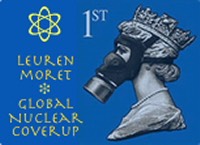
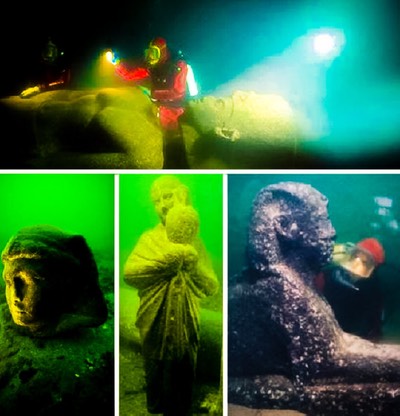


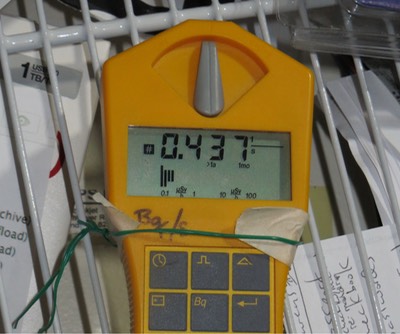
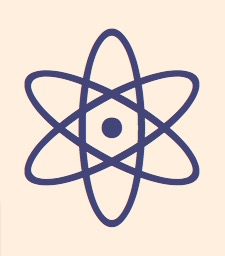
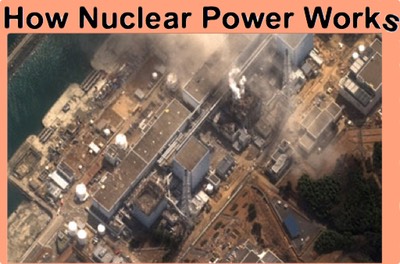

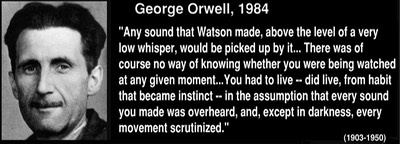

![20120724 - 7-24-2012 The More We Learn - quote from David Rockfeller -_thumb[2]](../_Media/20120724---7-24-2012-the_med_hr.jpeg)

